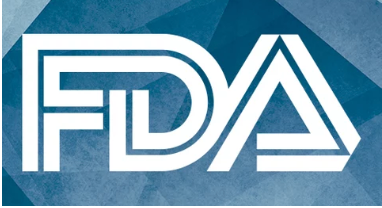Generic Ibrutinib Tablets Earn Tentative FDA Approval in Blood Cancers
Ibrutinib tablets will become available at 140 mg, 280 mg, and 420 mg for patients with chronic lymphocytic leukemia and Waldenström macroglobulinemia.
The FDA originally approved ibrutinib for patients with CLL after at least 1 prior line of treatment as well as for those with CLL and a 17p deletion in July 2014.

The FDA has tentatively approved generic tablet formulations of ibrutinib (Imbruvica) at 140 mg, 280 mg, and 420 mg across different hematologic malignancy indications, according to a press release from the developer, Zydus Lifesciences Limited.1
Ibrutinib is indicated for the treatment of adults with chronic lymphocytic leukemia (CLL) or small lymphocytic lymphoma (SLL) harboring a 17p deletion as well as those with Waldenström macroglobulinemia. The press release noted that the developer has received 420 approvals after the filing of 484 abbreviated new drug applications since the beginning of the filing process in 2003 and 2004.
CLL Indication
The FDA originally approved ibrutinib for patients with CLL after at least 1 prior line of treatment as well as for those with CLL and a 17p deletion in July 2014.2 Supporting data for the approval came from the phase 3 PCYC-1112 or RESONATE trial (NCT01578707) assessing the safety and efficacy of ibrutinib vs ofatumumab (Kesimpta) among 391 patients with CLL or SLL. Additionally, 32% of patients in the trial population had 17p deletions.
Data showed that the median progression-free survival (PFS) was not reached (NR) with ibrutinib vs 8.1 months with ofatumumab (HR, 0.22; 95% CI, 0.15-0.32; P < .0001). Regarding overall survival (OS), treatment with ibrutinib reduced the risk of death by 57% compared with ofatumumab (HR, 0.43; 95% CI, 0.24-0.79; P = .05). Additionally, the objective response rate (ORR) was 42.6% vs 4.1% in each respective arm.
The most common grade 3/4 adverse effect (AE) was pneumonia, which affected 10% of patients. The most common nonhematologic toxicities included diarrhea (48%), fatigue (28%), musculoskeletal pain (28%), nausea (26%), and pyrexia (24%). Hematologic AEs of any grade included platelet count decrease (52%), neutrophil decrease (51%), and hemoglobin decrease (36%).
In the RESONATE trial, patients were randomly assigned to receive ibrutinib at 420 mg orally until disease progression or unacceptable toxicity (n = 195) or intravenous ofatumumab at an initial dose of 300 mg followed by 11 doses at 2000 mg (n = 196).
The trial’s primary end point was PFS. Secondary end points included OS, ORR, and safety.
Patients 18 years or older with a diagnosis of CLL or SLL that met International Workshop on Chronic Lymphocytic Leukemia 2008 guidelines and at least 1 prior line of treatment were eligible for enrollment in the trial.3 Other requirements for enrollment included having an ECOG performance status of 0 or 1 and measurable nodal disease per CT.
Waldenström Macroglobulinemia Indication
The FDA approved ibrutinib monotherapy as the first treatment specifically indicated for Waldenström macroglobulinemia in January 2015.4 The approval was based on a phase 2 trial (NCT02604511) from Dana-Farber Cancer Institute, in which investigators assessed the efficacy and tolerability of ibrutinib at 420 mg once daily in 63 patients with previously managed Waldenström macroglobulinemia.
Based on an independent review committee assessment using criteria adopted from the International Workshop on Waldenström's Macroglobulinemia, 62% (95% CI, 48.8%-73.9%) of patients achieved a response. Moreover, approximately 51% had a partial response (PR), 11% experienced a very good PR, and no patients had a complete response. Data showed a median duration of response (DOR) that was NR (range, 2.8+ to 18.8+) and a median time to response of 1.2 months (range, 0.7-13.4).
The most common toxicities included neutropenia, thrombocytopenia, diarrhea, rash, nausea, muscle spasms, and fatigue. Additionally, 6% of patients discontinued therapy with ibrutinib due to AEs, and AEs resulting in dose reductions occurred in 11%.
The trial’s primary end points included the major response rate and best ORR.5 Secondary end points included DOR, time to response, PFS, and OS.
Patients 18 years or older with a clinicopathological diagnosis of Waldenström macroglobulinemia and measurable disease were eligible for enrollment. Other eligibility criteria included having an ECOG performance status of 0 to 2 and normal organ and marrow function.
References
- Zydus receives tentative approval from USFDA for ibrutinib tablets 140 mg, 280 mg, and 420 mg. News release. Zydus Lifesciences Limited. July 24, 2025. Accessed July 24, 2025. https://tinyurl.com/2jpztzb6
- IMBRUVICA (ibrutinib) receives regular approval by U.S. FDA in chronic lymphocytic leukemia (CLL) and CLL patients with del 17p. News release. Johnson & Johnson. July 28, 2014. Accessed July 24, 2025. https://tinyurl.com/ybhjyz6c
- A phase 3 study of ibrutinib (PCI-32765) versus ofatumumab in patients with relapsed or refractory chronic lymphocytic leukemia (RESONATE). ClinicalTrials.gov. Updated December 18, 2019. Accessed July 24, 2025. https://tinyurl.com/3tjscknv
- U.S. FDA approves IMBRUVICA (ibrutinib) for the treatment of Waldenström’s macroglobulinemia: first FDA-approved therapy for this disease. News release. Johnson & Johnson. January 29, 2015. Accessed July 24, 2025. https://tinyurl.com/4u3cbha3
- Study of ibrutinib in patients with symptomatic, previously untreated Waldenstrom's macroglobulinemia, and impact on tumor genomic evolution using whole genome sequencing. ClinicalTrials.gov. Updated December 7, 2022. Accessed July 24, 2025. https://tinyurl.com/54v9df75